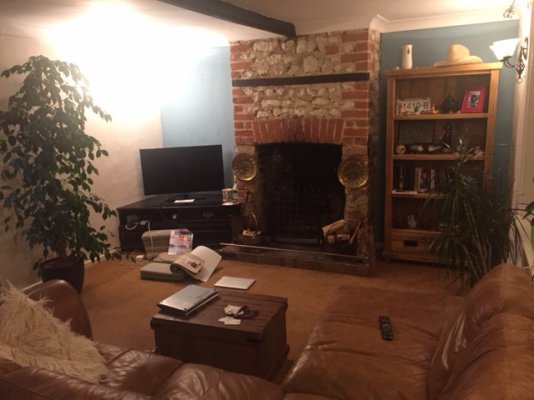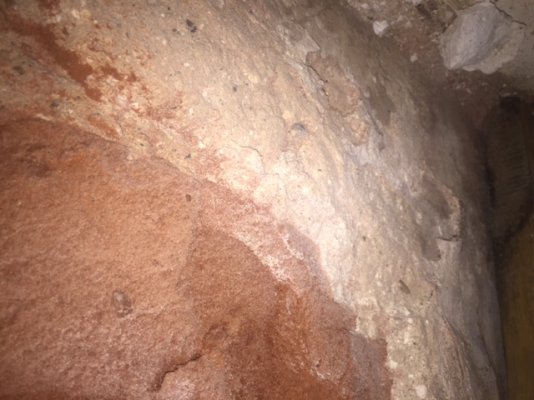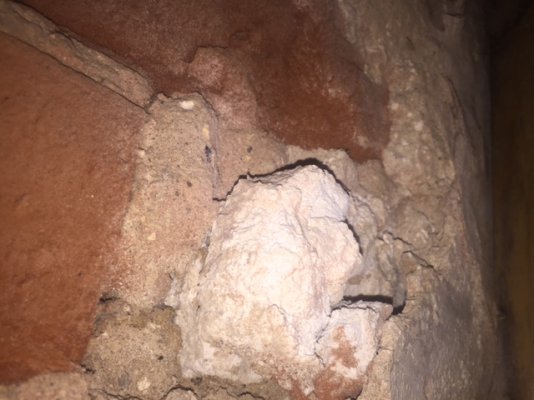Hi
I'm Andy and this is my first post here. I've been lurking around this forum for the past 2-3 months as my wife and I were in a process of buying our first period property. I have to say that the wealth of knowledge here is impressive and already saved us from making some mistakes (chemical DPC comes to mind straight away
Couple of weeks ago we've completed on a purchase of approx 1780 cottage in Lakenheath, Suffolk. The place is in a perfectly livable condition but quite rough round the edges, so we are slowly tackling various bits that need doing (BTW the property is not listed and is not in a conservation area). Anyway, onto the issue I have. One of the corners of the dining room has a visible damp issue (as you can see in the photos). On that wall there is a large bricked up chimney breast, which had sort of built-in shelving on both sides and the thin mdf board, which was used as a backing, started rotting at the bottom. After getting the shelving out, I exposed the wall to see the extent of the issue. It's not damp to touch, but I want to prevent issues in the future. I removed the mdf and peeled off old wallpaper (which was painted over). Now here are my questions:
1. I would like to install some sort of shelving there (was thinking about reclaimed wood), but I'm not sure what to do with the walls, so the same thing doesn't happen again? If I just put wooden boards against the wall, then they will start rotting again... what sort of finish I can put on those walls, so they look nice (don't have to be smooth) but at the same time, the moisture can escape? The walls are made of chalk blocks, but covered with some hard, modern render.
2. As you can see in one of the photos, at the bottom of the chimney breast the render started crumbling and so did the bricks underneath.... should I be worried? How can I stop it from getting worse?
As a side note - the source of moisture is relatively high ground level (at or just above floor level), as the house is built on a slight slope. I'm planning to tackle that, but it involves smashing a lot of concrete, so this may need to wait until spring.
Many thanks for any advice
Andy
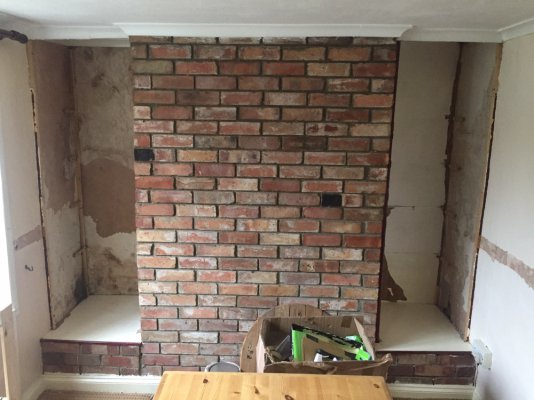
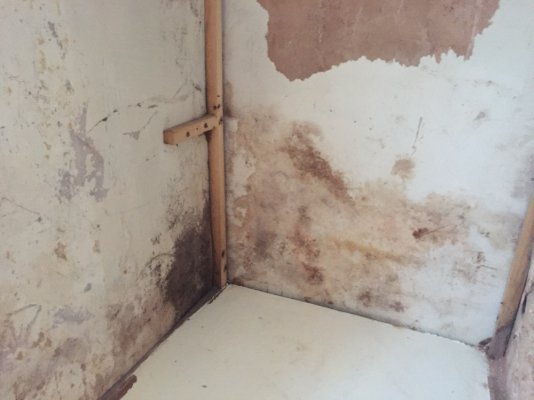
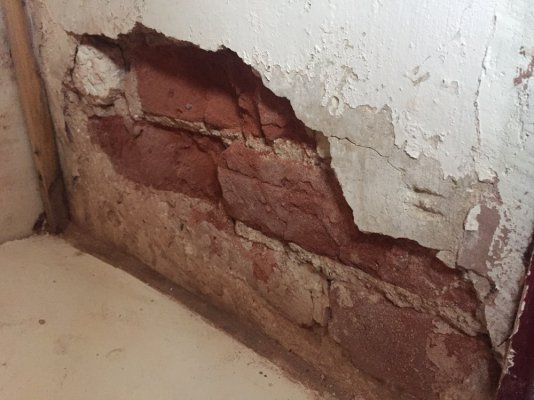
I'm Andy and this is my first post here. I've been lurking around this forum for the past 2-3 months as my wife and I were in a process of buying our first period property. I have to say that the wealth of knowledge here is impressive and already saved us from making some mistakes (chemical DPC comes to mind straight away
Couple of weeks ago we've completed on a purchase of approx 1780 cottage in Lakenheath, Suffolk. The place is in a perfectly livable condition but quite rough round the edges, so we are slowly tackling various bits that need doing (BTW the property is not listed and is not in a conservation area). Anyway, onto the issue I have. One of the corners of the dining room has a visible damp issue (as you can see in the photos). On that wall there is a large bricked up chimney breast, which had sort of built-in shelving on both sides and the thin mdf board, which was used as a backing, started rotting at the bottom. After getting the shelving out, I exposed the wall to see the extent of the issue. It's not damp to touch, but I want to prevent issues in the future. I removed the mdf and peeled off old wallpaper (which was painted over). Now here are my questions:
1. I would like to install some sort of shelving there (was thinking about reclaimed wood), but I'm not sure what to do with the walls, so the same thing doesn't happen again? If I just put wooden boards against the wall, then they will start rotting again... what sort of finish I can put on those walls, so they look nice (don't have to be smooth) but at the same time, the moisture can escape? The walls are made of chalk blocks, but covered with some hard, modern render.
2. As you can see in one of the photos, at the bottom of the chimney breast the render started crumbling and so did the bricks underneath.... should I be worried? How can I stop it from getting worse?
As a side note - the source of moisture is relatively high ground level (at or just above floor level), as the house is built on a slight slope. I'm planning to tackle that, but it involves smashing a lot of concrete, so this may need to wait until spring.
Many thanks for any advice
Andy




